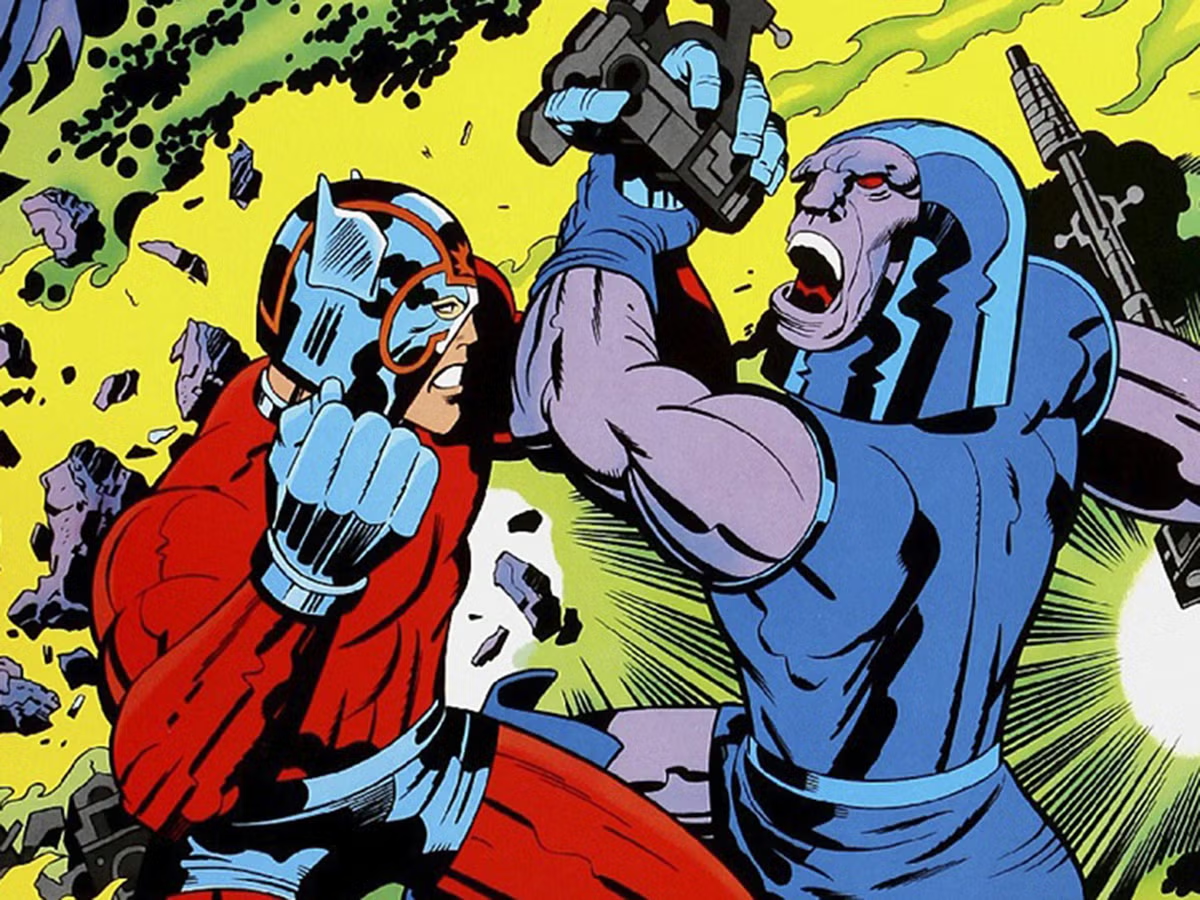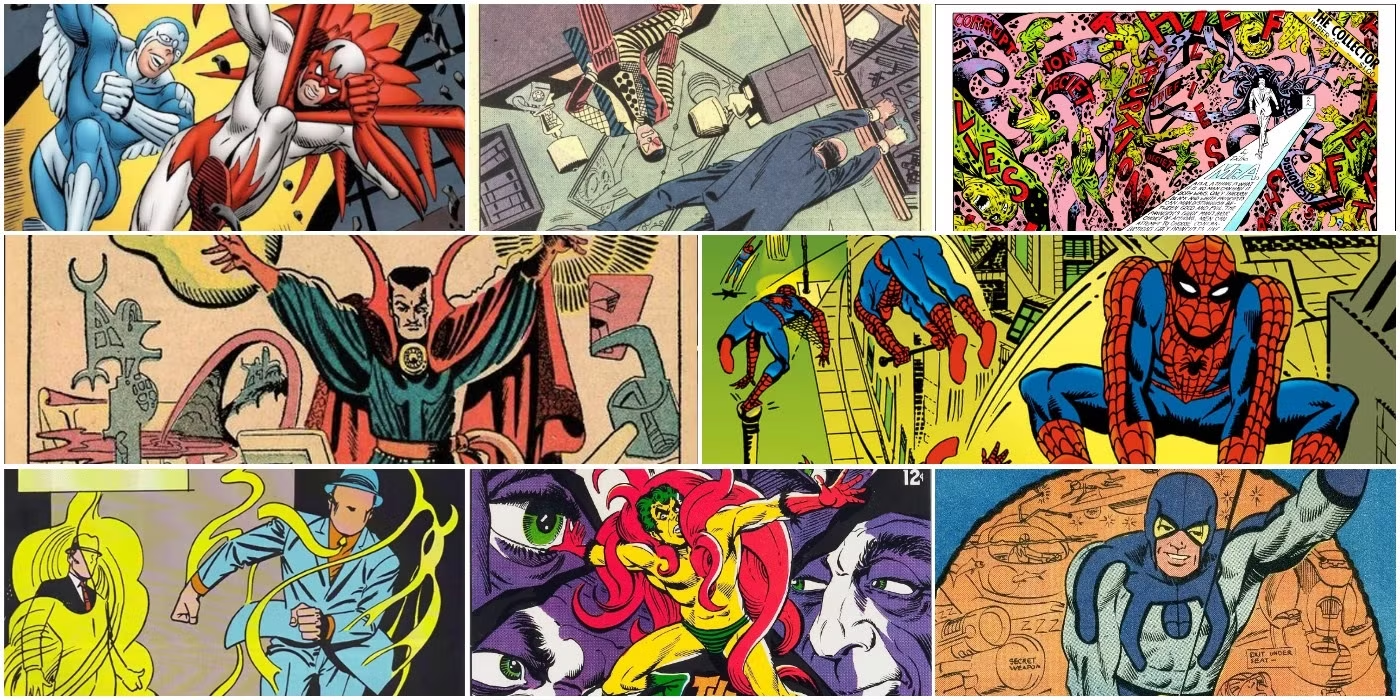The Evolution of Comics in the 1950s: A Golden Age of Artistic Innovation
The 1950s marked a transformative era in comic book history, characterized by distinctive artistic styles, storytelling innovations, and significant cultural impact. This period witnessed the emergence of new genres and artistic techniques that would influence comic creation for decades to come.
The Dawn of the 1950s Comic Style
The 1950s comic style revolutionized the medium with these defining characteristics:
| Visual Element | Description | Notable Examples |
|---|---|---|
| Color Palette | High-contrast, saturated colors with bold primaries | Superman's iconic red and blue, Green Lantern's emerald effects |
| Line Work | Precise inking with varying line weights | Jack Kirby's bold outlines, Steve Ditko's detailed textures |
| Panel Layout | Revolutionary grid-breaking compositions | Will Eisner's innovative splash pages, Wally Wood's 22-panel pages |
| Perspective | Dramatic camera angles and foreshortening | Joe Kubert's aerial battle scenes, Gil Kane's ground-up shots |
Technical innovations that defined the era:
- Introduction of Ben-Day dots for creating color gradients and textures
- Precise dot patterns at 65 lines per inch became standard
- Allowed for subtle shading and atmospheric effects
- Advanced brush techniques
- Speedball B-6 brush became the industry standard
- Enabled both fine detail work and bold strokes
Genre Evolution and Innovation transformed comics through specialized artistic approaches:
- Superhero Comics
- Anatomically exaggerated figures (7.5-8 heads tall)
- Dynamic action poses with motion lines
- Costume designs incorporating metallic effects
- Crime Comics
- Film noir-inspired shadowing techniques
- Urban landscapes with detailed architecture
- Realistic facial expressions showing moral conflict
Romance Comics
Romance comics dominated the 1950s market with their distinctive visual style:
| Art Element | Characteristics | Notable Examples |
|---|---|---|
| Character Design | Highly emotive faces, perfect hair and makeup | Young Romance #1's weeping heroines |
| Fashion | Period-accurate clothing with detailed fabric textures | Love Journal's Dior-inspired "New Look" dresses |
| Compositions | Close-up panels, dramatic angles | Heart Throbs' iconic kiss scenes |
Science Fiction Comics
The Space Race era revolutionized sci-fi comic aesthetics:
- Technical Innovation
- Chrome effects using layered highlights
- Airbrushed nebula backgrounds
- Experimental perspective techniques for space scenes
- Distinctive Design Elements
- Retro-futuristic control panels with detailed buttons and screens
- Crystalline alien architectures inspired by Art Deco
- Bio-mechanical creature designs

Horror Comics
Pre-Code horror comics pushed artistic boundaries to their limits:
| Technique | Purpose | Famous Implementation |
|---|---|---|
| Crosshatching | Creating oppressive shadows | Tales from the Crypt's cemetery scenes |
| Organic Lettering | Conveying supernatural voices | The Vault of Horror's title designs |
| Grotesque Anatomy | Shocking visual impact | Haunt of Fear's transformation sequences |
EC Comics' artists developed the "Rotting Reveal" technique - a three-panel sequence showing progressive decomposition that became industry standard for horror titles.
- Psychological Horror Elements
- Unreliable narrator perspectives shown through distorted panel layouts
- Subtle background details suggesting impending doom
- Color schemes shifting from warm to cool tones as stories progress
Technical Innovations
The 1950s revolutionized comic creation through groundbreaking technical advancements:
| Innovation | Specifics | Impact |
|---|---|---|
| Printing Technology | Introduction of offset lithography, 300-line screen printing | Sharper images, more vibrant colors, reduced printing costs |
| Color Separation | Chemical-based color splitting, improved acetate overlays | More accurate color matching, complex gradients possible |
| Lettering Tools | Leroy lettering systems, Ames Guide templates | Consistent typography, faster production times |
Cultural Impact and Social Context
Social Commentary
Comics tackled complex social issues through sophisticated storytelling:
- Cold War Narratives
- Superhero stories addressing nuclear fears
- Spy comics reflecting East-West tensions
- "Red Scare" themed storylines
- American Life
- Archie Comics' portrayal of idealized suburban existence
- Romance comics challenging traditional relationship norms
- Crime comics examining urban social issues
Youth Culture Revolution
"Comics weren't just entertainment - they were the voice of a generation finding its identity." - Jules Feiffer, 1956
Comics shaped youth culture through:
| Aspect | Expression in Comics |
|---|---|
| Fashion | Teen comics introducing new styles, from bobby socks to leather jackets |
| Music | Romance comics featuring emerging rock 'n' roll culture |
| Social Norms | Stories challenging traditional parent-child relationships |
| Consumer Culture | Advertisement pages promoting youth-oriented products |
Legendary Artists and Their Innovations
-
Jack Kirby (1917-1994)
- Invented the "Kirby Krackle" effect for energy visualization in Fantastic Four (1961)
- Featured prominently in cosmic battle scenes
- Became his signature artistic element
- Pioneered dynamic panel layouts with tilted angles in Captain America Comics (1941-1955)
- Revolutionized action sequences
- Enhanced storytelling dynamics
- Created the "floating figures" technique for action scenes in Tales of Suspense (1959-1968)

- Invented the "Kirby Krackle" effect for energy visualization in Fantastic Four (1961)
-
Steve Ditko (1927-2018)
- Developed surreal dimensional portals in Doctor Strange (Strange Tales #110-#146, 1963-1966)
- Created the iconic "Dark Dimension" visuals
- Established the mystical visual language of Marvel Comics
- Mastered psychological horror through abstract backgrounds in Tales of Suspense and Strange Tales (1950s-1960s)
- Invented unique hand gestures for spell-casting sequences in Doctor Strange
- The "Sign of the Vishanti" became iconic
- Influenced mystical gesture design in comics for decades

- Developed surreal dimensional portals in Doctor Strange (Strange Tales #110-#146, 1963-1966)
Comics Code Authority Impact
The 1954 Comics Code Authority transformed the industry:
| Before Code | After Code |
|---|---|
| Graphic horror elements | Symbolic representation of fear |
| Complex moral ambiguity | Clear good vs. evil narratives |
| Realistic violence | Stylized action sequences |
| Social commentary | Focus on supernatural threats |
Legacy and Influence
The 1950s aesthetic continues to shape modern comics:
- Art Techniques
- Digital artists recreating Ben-Day dot patterns
- Modern colorists studying 1950s palette combinations
- Revival of hand-lettering styles in indie comics
"The 1950s weren't just a golden age - they were the laboratory where modern comics were born." - Will Eisner, 1975
Contemporary applications of 1950s innovations:
| 1950s Element | Modern Usage |
|---|---|
| Strong outlines | Digital "inking" brushes in Photoshop |
| Color separation | RGB channel mixing techniques |
| Panel layouts | Responsive webcomic designs |
Use Video Style Transfer on Morph Studio to create Comics style videos
Transform your videos with Morph Studio's cutting-edge AI technology. Our Style Transfer feature lets you convert regular videos into stunning animations that embrace the iconic look of classic comics.
Click HERE to go to Morph Studio Video Style Transfer.
.png)
Simple Process:
- Start : Upload any video to our Style Transfer platform
- Transform : Select the comics style
- Finish : Let our AI work its magic, then download your transformed masterpiece
By making animation accessible to everyone, our technology empowers creators to produce videos with the dramatic flair and bold visual style of vintage comic books, while maintaining their unique creative vision.
Conclusion
The 1950s represented a pivotal moment in comic book history, establishing artistic standards and storytelling techniques that continue to resonate today. This era's influence extends beyond comics into broader popular culture, making it a crucial period for understanding the evolution of visual storytelling.
The combination of artistic innovation, cultural significance, and technical advancement during this period created a lasting legacy that continues to inspire creators and engage audiences in the modern era.